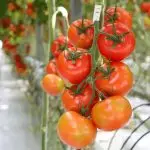Fungus Gnat
Overview
Fungus Gnats (also known as Sciarid Fly) are common pests in nurseries and greenhouses.
Many types of Fungus Gnats can affect crops but most belong to the genus Bradysia.
Fungus Gnats are black, delicate, mosquito-like flying insects, often seen moving close to the potting media. The optimum temperature range for Fungus Gnats is 15°C to 30°C.
Why you need to control Fungus Gnat
Fungus Gnat females lay their eggs in the top layer of soil or potting media. The Fungus Gnat larvae feed mainly on decaying organic matter but can also feed on root hairs. Large infestations of larvae tunnel into the roots and occasionally plant stems, causing poor establishment of seedlings, wilting and even death. Larvae can also spread and amplify soilborne fungal diseases like Fusarium, Pythium, Phytophthora, and Verticilium, and Botrytis.
Fungus Gnats may also affect the aesthetic appearance of plants by leaving faecal droppings (flyspecks) on flowers and leaves.
Beneficial predators to control Fungus Gnat among crops
You can control Fungus Gnats through a combination of cultural and biological practices.
Since overwatering, organic growing media, overfertilisation, and poor site hygiene encourage Fungus Gnat activity, it is a good idea to address these problems first.
Biological Services also produce and supply products to help you control Fungus Gnats such as Dalotia predatory beetles, Hypoaspis predatory mites and yellow sticky traps or rolls which you can use to monitor and mass-trap the pests.
If you have a high infestation, our Consultants can design a program that can include a combination Dalotia and Hypoaspis, beneficial nematodes and compatible pesticides.
Get tailored advice for your commercial crop
To speak with one of our qualified consultants about your current commercial crop challenge or to learn about the benefits of the IPM maintenance and monitoring services we provide, contact us.














